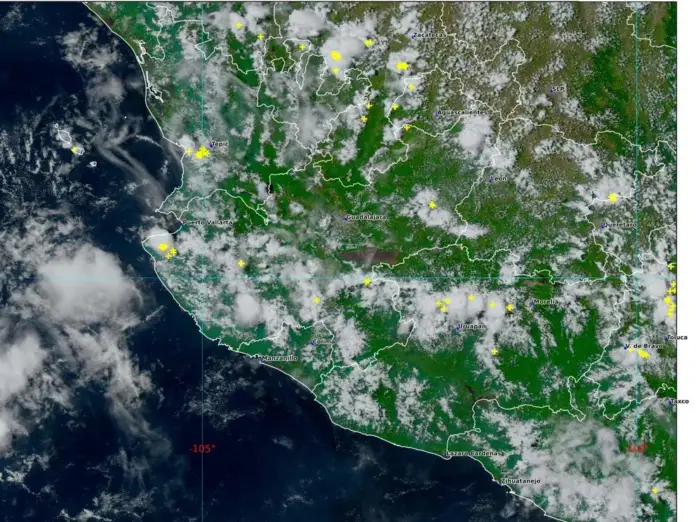:quality(85)/cloudfront-us-east-1.images.arcpublishing.com/infobae/C4HMJA3N4NDBBO5CWY33H4UYLU.jpg)
The Colima Volcano, also called the Colima Volcano of Fire, is monitored incessantly by the National Meteorological Service (SMN). This majestic colossus exhibits signs of activity and there is a possibility that it will manifest events during the rest of the day.
Weather forecast in the area of the volcano
Real-time image not available, so in the event of an exhalation event of water vapor, gas and/or ash, it will not be observed. The volcano is in a passive degassing stage. More information in the weekly technical bulletin of the Colima volcano, from the University Center for Volcanological Studies of the University of Colima (UCOL-CUEV). Manzanillo Colima radiosonde, 06:00 am local time, August 29, 2024: At 5000 m: Southeast wind of 22 km/h. Between 5000 and 7000 m: Southeast wind of 22 km/h. Above 7000 m: Southeast wind of 12 km/h.
There is cloud cover over the volcano area, which would hinder satellite detection in the event of any activity (Image 2). The satellite estimate of rainfall does not show precipitation over the volcano area in the last three hours, this with a cutoff at 12:00 h today, local time (Image 3).
Ash trajectory
In the event of any exhalation of volcanic ash, gas and/or water vapor, the trajectory forecast of the Hysplit (Hybrid Single-Particle Lagrangian Integrated Trajectory) model, executed at CONAGUA-CGSMN with a possible emission height of 500 meters above the volcanic cone which is 3,839 meters AMSL “above mean sea level” (2,745 meters AGL “above ground level”), indicates trajectories to the west and west-southwest (simulating exhalation every next hour, 6), as it passes through the northeast and northwest of the state of Colima and the south and southwest of the state of Jalisco, for the first 12 hours of the forecast, (14:00 to 02:00 local time of the following day). Subsequently, for the last 12 hours of the forecast (02:00 to 14:00 local time of the following day), the trajectories will continue over the southwestern area of the state of Jalisco; the western area of the state of Colima and over the Pacific Ocean where they would end. These trajectories predict the main direction of emissions of the plume of gas, water vapor and/or volcanic ash, coming from the Fuego Volcano of Colima.
The Nevado de Colima Volcano National Park, launched on September 5, 1936 by Lázaro Cárdenas, covers 6,554.75 hectares that include the Colima Volcanic Complex, made up of the Fuego Volcano, one of the most active in Mexico and the Nevado de Colima. Its declaration as a federal Protected Natural Area highlights its wealth of varied ecosystems, a result of its volcanic origin, intricate topography, high elevations, mountainous isolation and proximity to the Pacific Ocean.
The landscape is characterized by slopes covered with pine and oak trees, in contrast with semitropical areas at lower altitudes, fostering a heterogeneous biodiversity that includes endemic species of flora and fauna. The Colima Volcano, a stratovolcano composed of layers of lava and sedimentary rocks, with geological elements dating from the Jurassic to the Quaternary, provides testimony to the complex geological history of the region.
Although the Colima Volcano is famous for its constant activity, Popocatépetl is considered more dangerous due to nearby communities. The protected status of the National Park allows visitors to enjoy outdoor activities such as hiking, camping and volcano observation, encouraging the conservation of the area.
This conservation guarantees the well-being of its biodiversity and offers future generations the possibility of valuing and studying this unique ecosystem, underlining the importance of protecting these natural spaces.
Source: infobae






